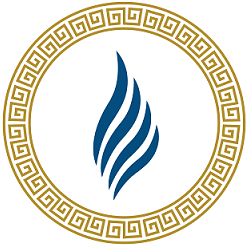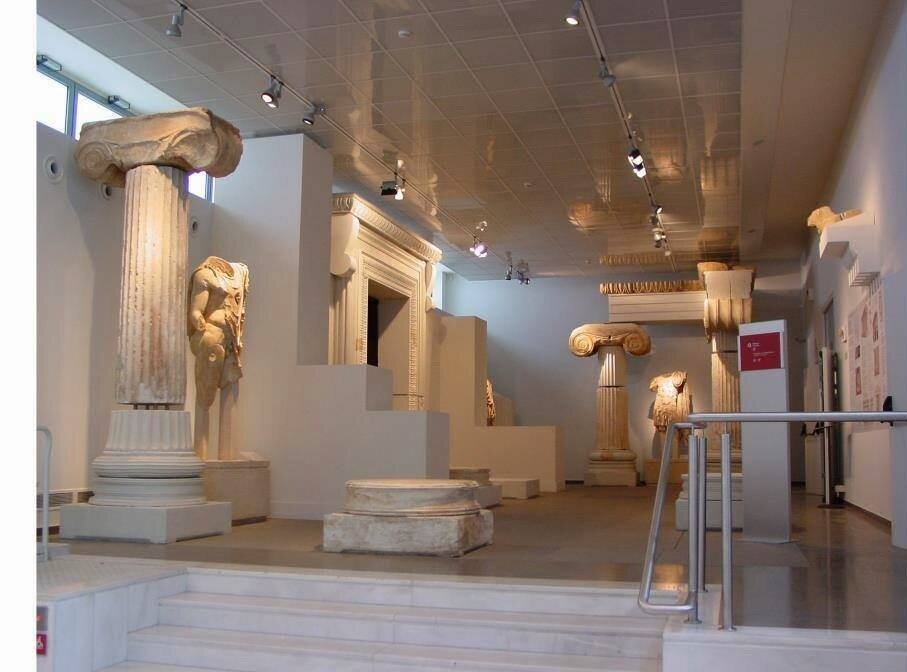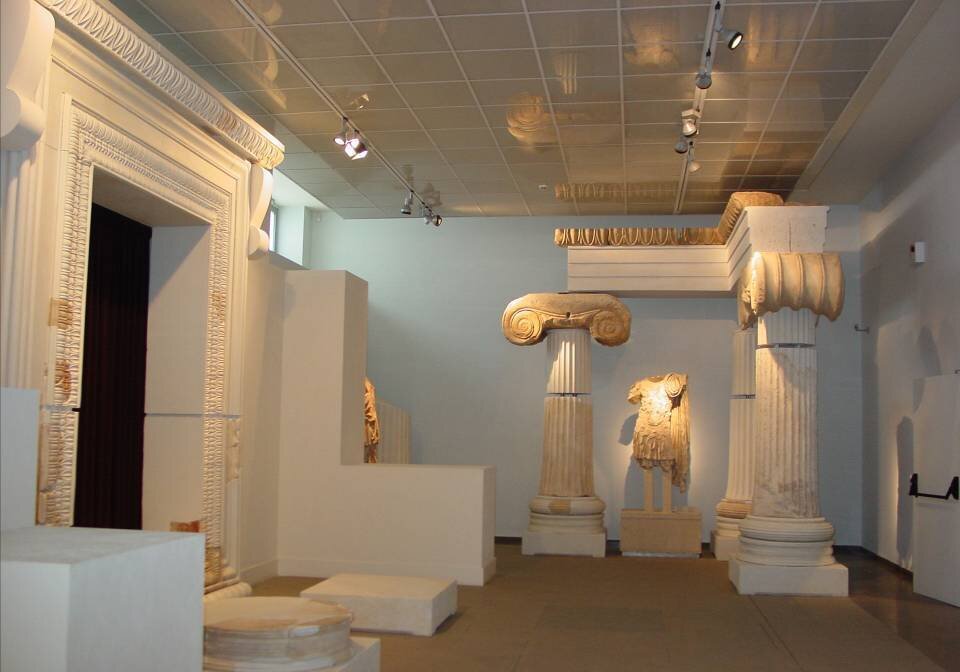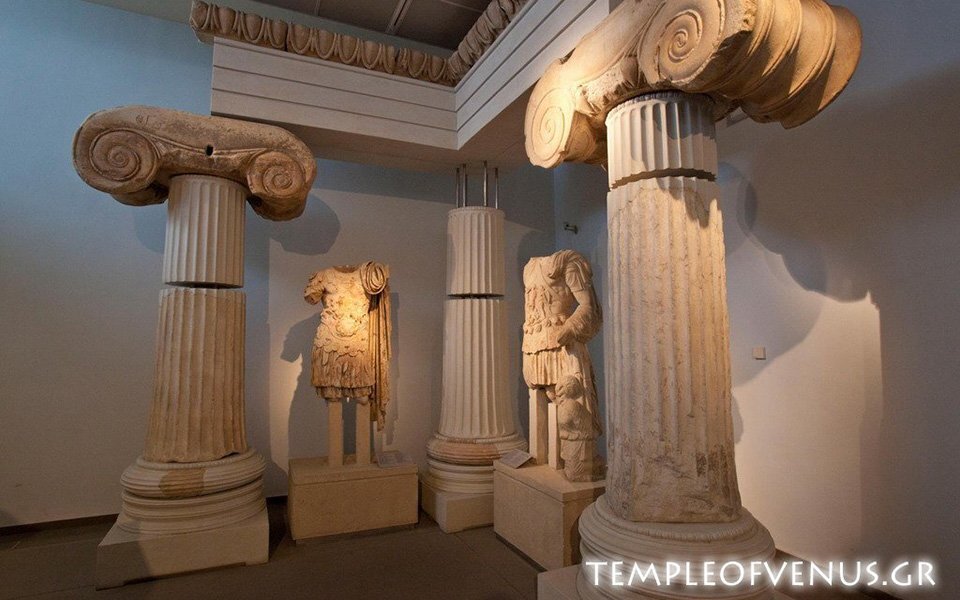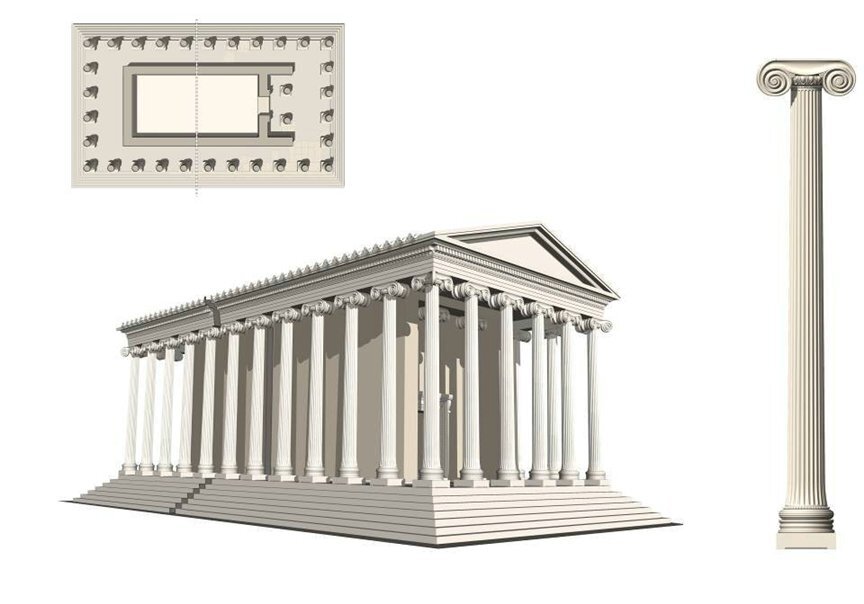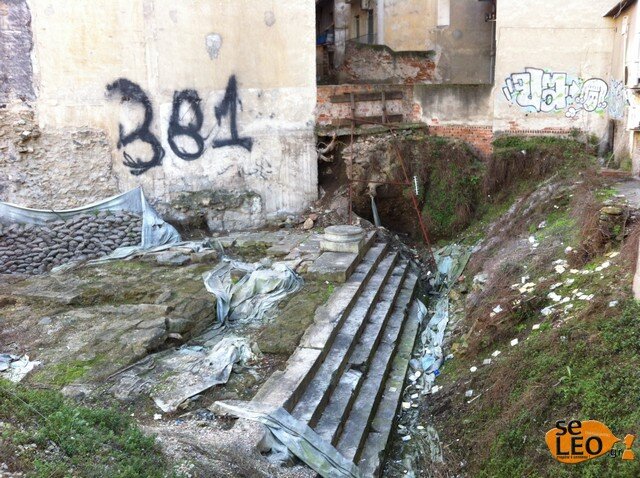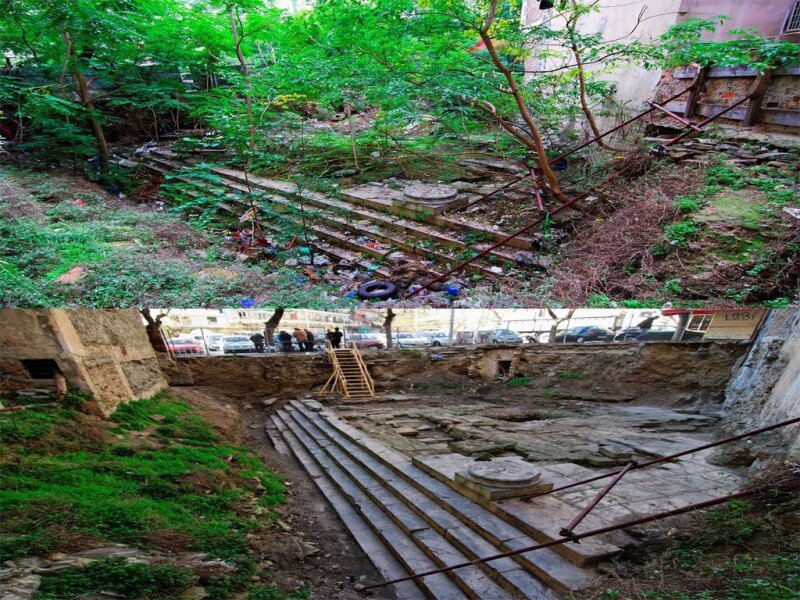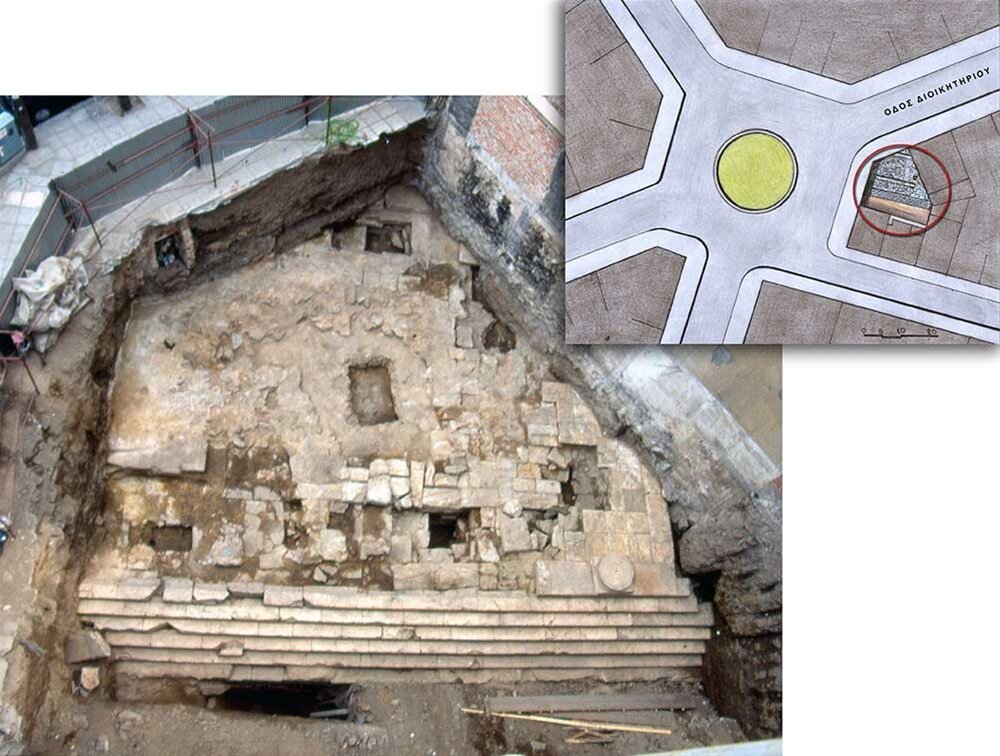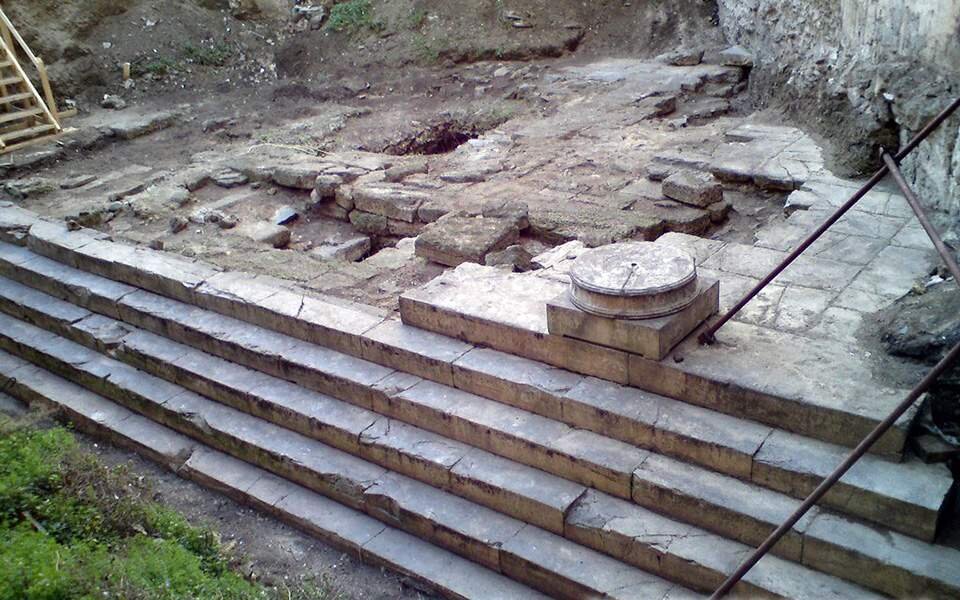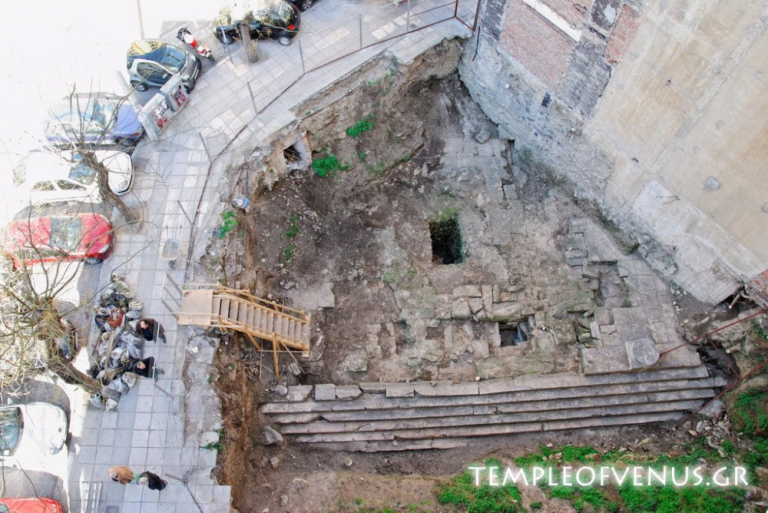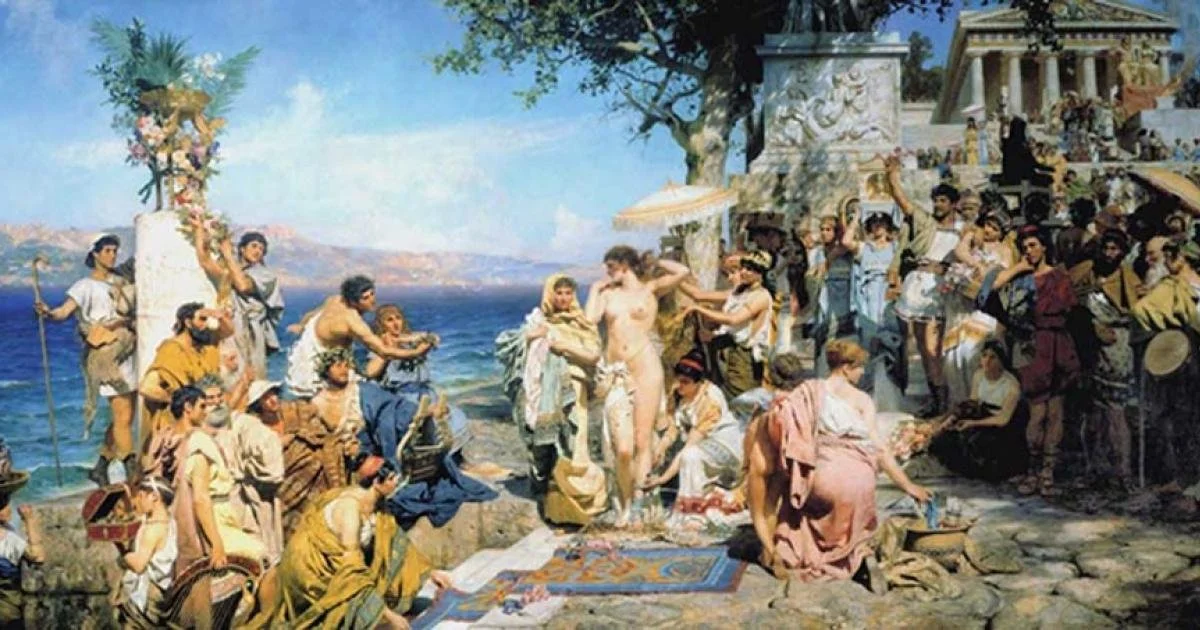What is left of the impressive temple of the goddess Aphrodite
One of the most impressive exhibits in the Archaeological Museum of Thessaloniki are the preserved parts of the lost temple of the goddess Aphrodite, which was also called the small Parthenon of Thessaloniki because of its size.
It is an Ionian temple from the post-Archaic period (late 6th century BC), discovered in the 1930s.
Archaeologists believe that the temple was originally located elsewhere and was dismantled, transported and rebuilt in the sanctuary next to Sarapeio in the 1st century AD. For the original site, there is an estimate that it was located in ancient Thermi, as a temple dedicated to Dionysus.
According to a more recent view, the site was elsewhere, in ancient Aeneas. There, according to written tradition, there was a temple of Aphrodite. An inscription made it known that there was a temple in Thessalonica dedicated to Julius Caesar. It is very likely that Caesar was worshipped there together with his mythical ancestor Aphrodite, mother of Aeneas, who was the ancestor of the Julian generation.
It is thought that the Thessalonians moved the temple of Aphrodite from Aeneas to their city to appease Octavian Augustus, Caesar's adopted son, for supporting his political rival Antonios during the civil war. But Antonios was defeated at Aktio and the support ceased. The fact that imperial statues were found in the temple along with a statue of the goddess Rome suggests that it was a temple of imperial worship or a temple into which the worship of the emperors was later incorporated, as often happened. Another view claims that the temple was rebuilt by displaced architectural members or repaired in the years of Hadrian, who was identified with Zeus Eleftherios in the area of Thessalonica and was worshipped here as a god with the goddess Rome.
Today are preserved from the temple and exhibited in the Archaeological Museum of Thessaloniki:
1. The high platform built in Roman times with transported archaic stairs and pillars
2. parts of spirals of bases and columns and a pedestal
3. three parts of columns and three whole capitals, one of which is from another monument
4. many parts of cornices
5. small fragment of an epistyle and a lion's head gutter
6. many fragments of the perimeter of the entrance of the temple
In many of the preserved limbs, there are carvings from the Roman period. These were used in the reconstruction of the temple. The representation presents particular difficulties because the uncovering of the monument has not yet been completed and not all architectural limbs have been identified. Therefore, the representation refers only to the Roman reconstruction of the temple, which took place in the 1st century AD. The temple is six-storied, as its western side has not been uncovered.
